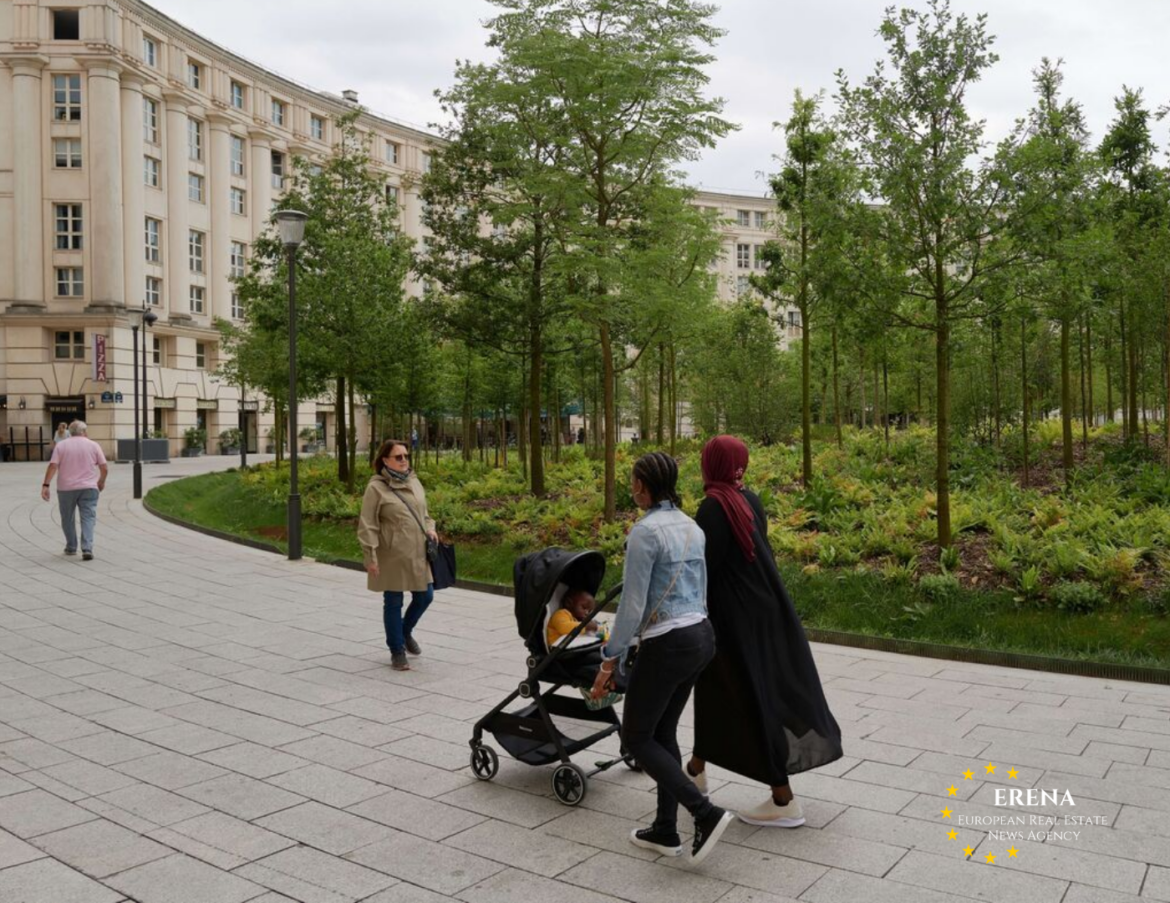On November 20, 2024, the Paris Municipal Council approved a landmark bioclimatic Local Urban Plan (PLU), setting the tone for the city’s development over the next 15 years. This plan introduces strict sustainability targets, redefines housing strategy, and transforms how and where construction can take place.
A Green and Inclusive Vision for Paris
The PLU Bioclimatique embeds environmental and social priorities into zoning rules across all 20 arrondissements. The new framework aims to reduce urban heat, improve biodiversity, and rebalance housing access in a city where affordability and density are long-standing challenges.
Housing Reforms: From Airbnb Limits to 40% Public Stock
The city plans to raise public housing to 40% of the total residential stock by 2035, including 30% social housing. In underserved central and western districts, 50% of all new housing must now be designated for social use. Approximately 800 underused plots, many currently zoned for offices, have been earmarked for conversion into housing.
To diversify homeownership, the PLU supports the BRS model (bail réel solidaire), separating land and building ownership to cut entry costs. New short-term rentals, including Airbnb-style properties, are now banned in saturated neighborhoods.
Current average property prices in Paris (Q4 2024):
- 6th arrondissement: €13,460/m²
- 7th arrondissement: €12,420/m²
- 4th arrondissement: €12,390/m²
- 19th and 10th arrondissements: ~€7,800/m²
- Citywide average: €9,470/m²
Greening the City: Parks, Trees, and Open Ground
The plan calls for the creation of 55 hectares of new public parks, contributing to a broader goal of 300 hectares by 2040. Key green projects include a 25-hectare green corridor in the 18th and 19th arrondissements. All existing green areas are now legally protected, while 40% of public surfaces must be “de-sealed” (converted to permeable land) by 2050.
New construction on private plots over 150 m² must leave at least 60–65% of the ground undeveloped, promoting natural drainage and heat reduction. The city will also catalog and protect 100,000 street trees.
Construction Limits: No More High-Rises
The PLU reinstates Paris’s historic height cap of 37 meters (approx. 12 storeys) for all new buildings. Demolition is heavily restricted; renovation and adaptive reuse are prioritized. Developers must now favor bio-based materials like wood or stone—concrete-only structures are no longer permitted.
Larger developments must also:
- Generate renewable energy onsite
- Install solar panels or green roofs
- Avoid external AC units in favor of passive cooling systems
District-Level Impact: Neighborhood Projects Unfold
Each arrondissement has a tailored implementation roadmap. Highlights include:
- Val-de-Grâce (5th): A new community garden
- Champs-Élysées (8th): Social housing projects
- Bercy–Charenton (12th): Mixed-use eco-district under bioclimatic guidelines
- Fertile Island (19th): Rooftop farms and green housing on old rail yards
Market Reaction: A Mix of Optimism and Caution
Residents and environmental groups largely support the PLU. However, real estate investors and developers have raised concerns over feasibility and cost increases. Major office portfolios in prime areas may lose value as mixed-use requirements take effect. Developers will need to partner with social housing operators or rethink existing office assets.
At the same time, interest in sustainable development has grown. Investors focused on green finance and adaptive reuse see opportunities in the plan’s incentives and strict guidelines.
Looking Ahead
The PLU Bioclimatique is Paris’s most ambitious urban strategy to date. It represents a shift toward low-rise, socially inclusive, and climate-resilient development. With final regulatory approval expected in 2025, the plan is already shaping permits and designs.
“This is a roadmap for the next 15 years. Paris is committing to equity, ecology, and elegance—all at once,” said one senior city planner.

